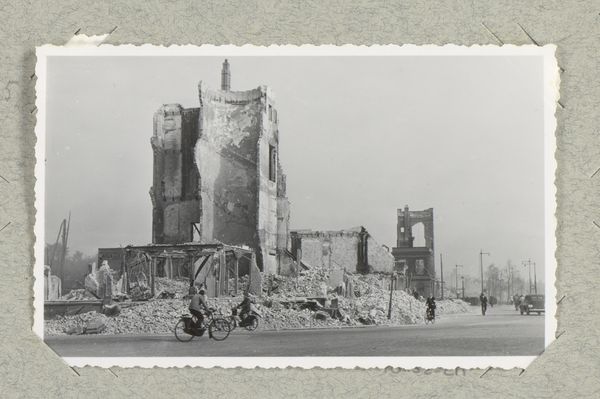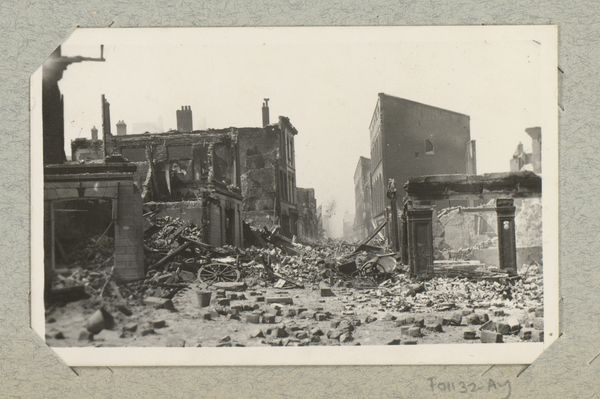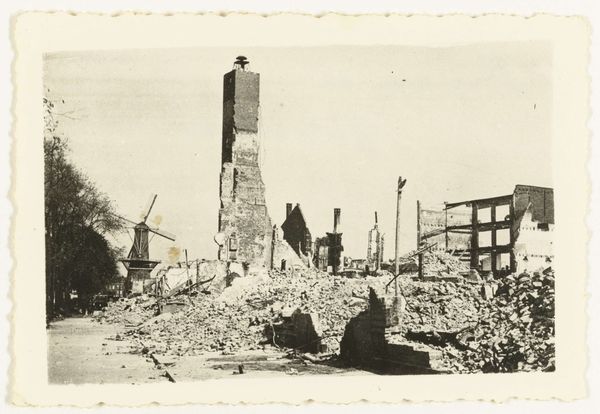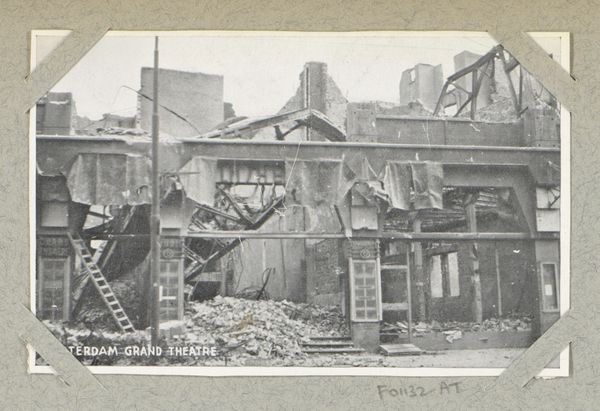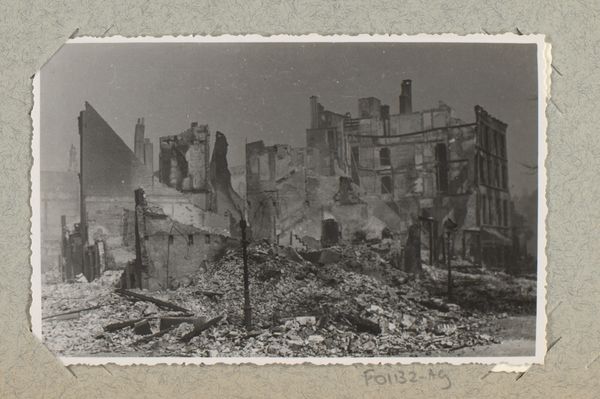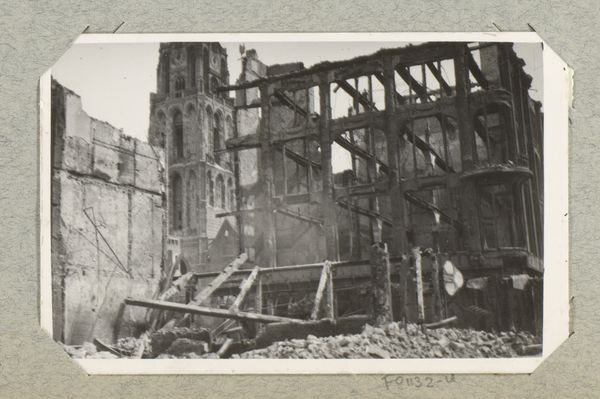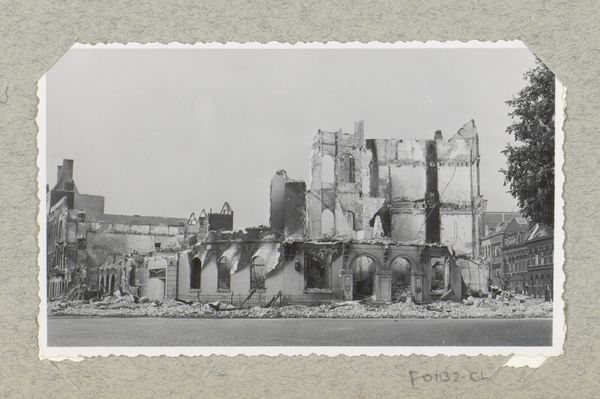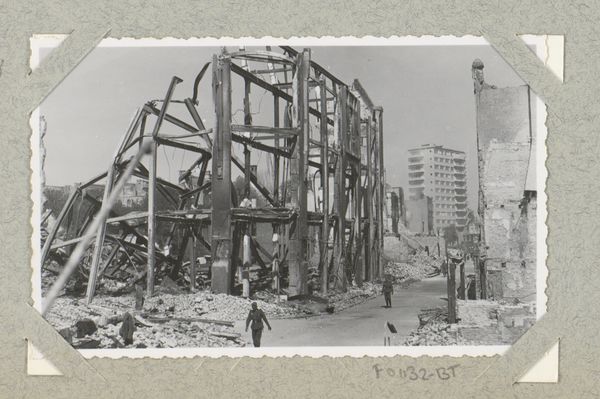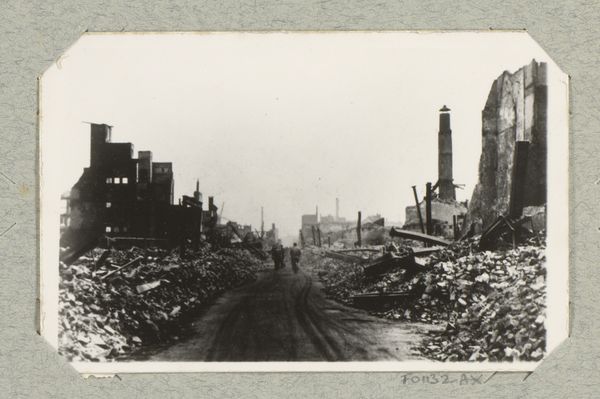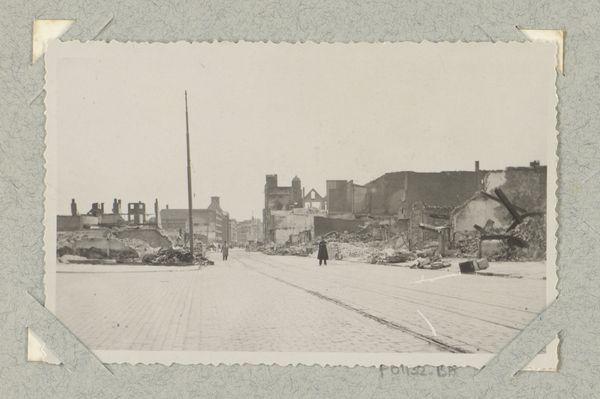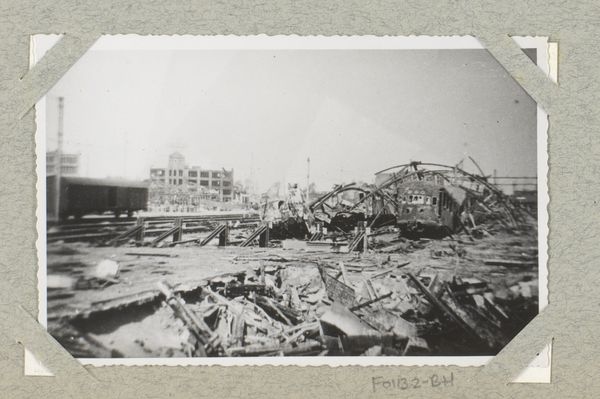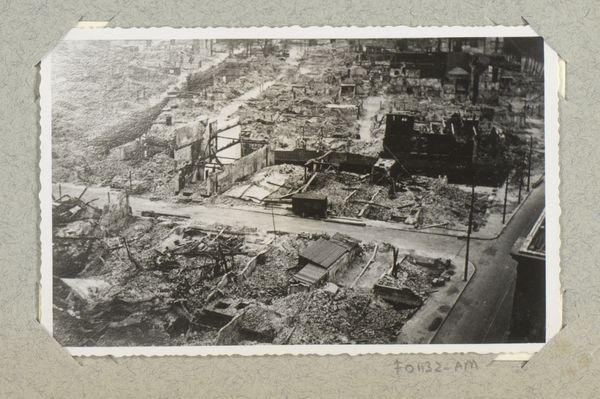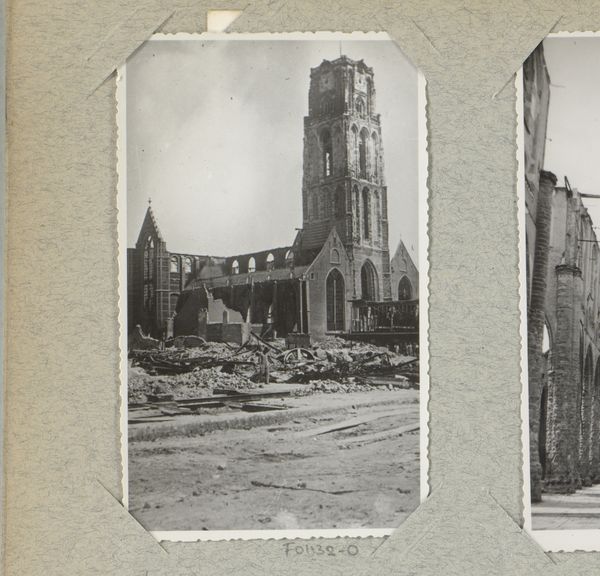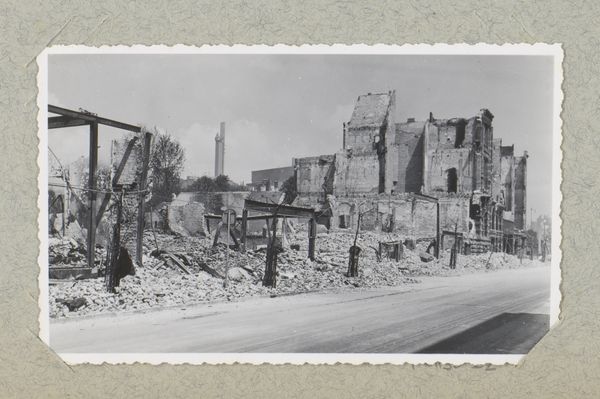
Dimensions: height 88 mm, width 136 mm
Copyright: Rijks Museum: Open Domain
Editor: So this gelatin silver print, "Ruïnes bij het Steiger en de Grote Kerk te Rotterdam" by J. Nolte, was taken sometime between 1940 and 1945. The ruined buildings create this heavy, somber mood. It makes you wonder what happened here. What is your read on this piece, considering its context? Curator: Given the date, we can deduce these ruins likely resulted from the bombing of Rotterdam in May 1940. What’s striking is not just the devastation, but the framing. Note how the Grote Kerk, a symbol of Rotterdam, remains standing amidst the destruction. Consider how Nolte’s photograph functions almost as a historical document, a conscious record created during or shortly after a major political and social upheaval. Editor: That's fascinating! So, it’s less about artistic expression and more about capturing a specific moment in history? Curator: I wouldn't dismiss artistic expression entirely. The choice of a gelatin silver print lends a certain gravity to the image. Think about what this photograph meant to viewers then. Did it serve as a memorial? A call to rebuild? How does its public function as documentation intersect with its artistic qualities? Editor: I see your point. It's more than just a snapshot; it’s a statement about resilience. Were images like these commonly circulated? Curator: Absolutely. Disseminating such images played a role in shaping public memory and national identity. The question is how did these images influence post-war reconstruction efforts, and what political narratives did they support? It’s important to ask who controlled the image-making and its distribution. Editor: That adds so much depth to how I see the photograph. It's a potent reminder of the past but also raises complex questions about power and representation. Thanks for unpacking that. Curator: Indeed, understanding the socio-political currents influencing art offers powerful insight to both its creation and reception, which in turn shapes how society evolves.
Comments
No comments
Be the first to comment and join the conversation on the ultimate creative platform.
